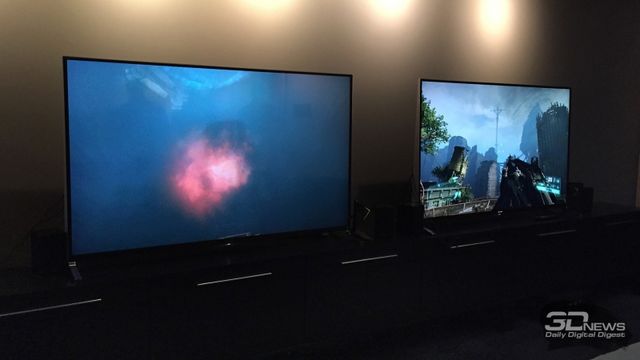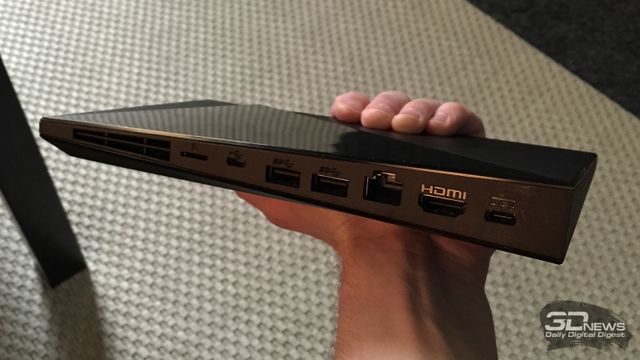The first thing to note – this is the physical embodiment of the device. Amid all this family SHIELD representative – not only the most powerful, but also the best in terms of design and quality materials. Box harder than it seems at first glance – 654 g But for stationary devices is a virtue, not a flaw.
The gap between the faces of the housing on the front surface is illuminated by a green LED. The slit on the opposite side serves for cooling.
Top box is equipped with two ports USB 3.0, port Micro USB 2.0, card reader format Micro SD. Video output via HDMI 2.0.
Separately for SHIELD can buy a heavy stand, hold the device in an upright position and not giving a slip from the table.
In the demo area SHIELD offered us to play two games directly working on SoC devices – Doom 3 and port Crysis 3, which is still in beta status. Both games are working to resolve Full HD: although NVIDIA does not limit this option to run the 3D-graphics on Tegra X1 mode Ultra HD impractical (but the video will play back in 2160p resolution with a frame rate of 60 Hz). Gaming experience extremely positive. Doom 3 did not lose in image quality compared to desktop prototype and runs very smoothly. Crysis 3, apparently, gives the frame rate in the region of 30 k / s, moreover, striking such a defect , as rough stripes on gradients. But the level of graphics in general there is much higher than in Doom 3.
, as rough stripes on gradients. But the level of graphics in general there is much higher than in Doom 3.
Another source games for SHIELD – broadcast from a home PC or server GRID. California NVIDIA servers were very close, so the game with GRID broadcast with impeccable graphics, which is not the reaction time to enter. Like it or not, but even with perfect ping still have a slight delay, which quickly starts to get on your nerves. Let’s see if NVIDIA something to do with this fundamental problem in the future.
The first batches of set-top boxes SHIELD go on sale in May 2015 at a price of $ 199 (included with the controller).
The post First look at the set-top NVIDIA SHIELD appeared first on Hardware-Boom.
